There is nothing superfluous in the Mega Man 11 platformer, according to video blogger Mark Brown. We publish a translation of his review on a novelty from Capcom.
Mega Man 11 from Capcom has been released. It’s time to take a look at the design of its levels.
Before playing the new part of Mega Man and getting acquainted with each of its levels, I expected to see a lot more unique elements in the game. We are talking here about platforms, obstacles and opponents that are found only at certain levels. For example, at the Blast Man level, crates, lasers, bombs, bots with fire barrels and snipers in walking robots are among the unique dangers. And at the Tundra Man level, only snowflakes, birds throwing snowballs and the wind are unique. Such a set of dangers looks insufficient for a game where there are only eight levels (not counting the castle of the main antagonist — Dr. Wiley).

And yet Mega Man 11 didn’t bore me. It is surprisingly diverse, although there are not so many unique elements in it. I wondered: why?
Yes, because the structure of the levels in the game is really good. Capcom used a number of ideas that we also encountered in Mario, Donkey Kong and Rayman. And you would definitely want to see some design solutions in your own platformers.
The game is very easy to analyze due to one feature that distinguishes it from other platformers. The levels in Mega Man 11 consist of 15-20 rooms, between which the camera travels. The sheer variety of shapes and sizes of these rooms makes it possible to call each level unique.

- Classic horizontal rooms. Ideal for placing platforms in it. Horizontal rooms are of two types: the player moves strictly from right to left or from left to right. This difference underlies a number of tests. For example, in one room the player will be able to escape from danger, and in another he will have to go at it head-on.
- Vertical rooms. There are ascending or descending ones. It is worth considering this difference in battles with mini-bosses. For example, Pick Man is easier to win by standing at the same height with him. But if Pick Man is above you, then it’s harder to get him.
- Rooms are boxes without transitions.
- Rooms where obstacles are arranged in the form of stairs.
- Rooms where obstacles are arranged in a zigzag pattern. Here the player can safely observe the movement of opponents. But you will have to fight them in narrow passages where you cannot jump.
Almost every room in Mega Man 11 belongs to one of these types — with rare exceptions. For example, the room at the Bounce Man level is horizontal, but when jumping suddenly it is heard in height. And the room at the Block Man level looks like a zigzag, but then turns into a horizontal one.
The rooms follow each other in different order. Here is a map of rooms at the Acid Man level. This level, like the others, looks absolutely unique, because the player is forced to change the direction of movement all the time.

Let’s talk about the dangers that are found everywhere, at different levels. Snipers, spider robots, rotating wheels, as well as bottomless abysses and spikes are ordinary opponents. They were scattered across the levels mixed with unique opponents.
At each level there are one or two basic mechanics that are not found anywhere else. At the Acid Man level it’s acid, at the Blast Man level it’s exploding crates. They become more dangerous as you progress through the level. And each time they appear in conjunction with new dangers. We saw something similar in Donkey Kong Country.
Consider the Impact Man level as an example.
In room 2 we see floating platforms and warheads.
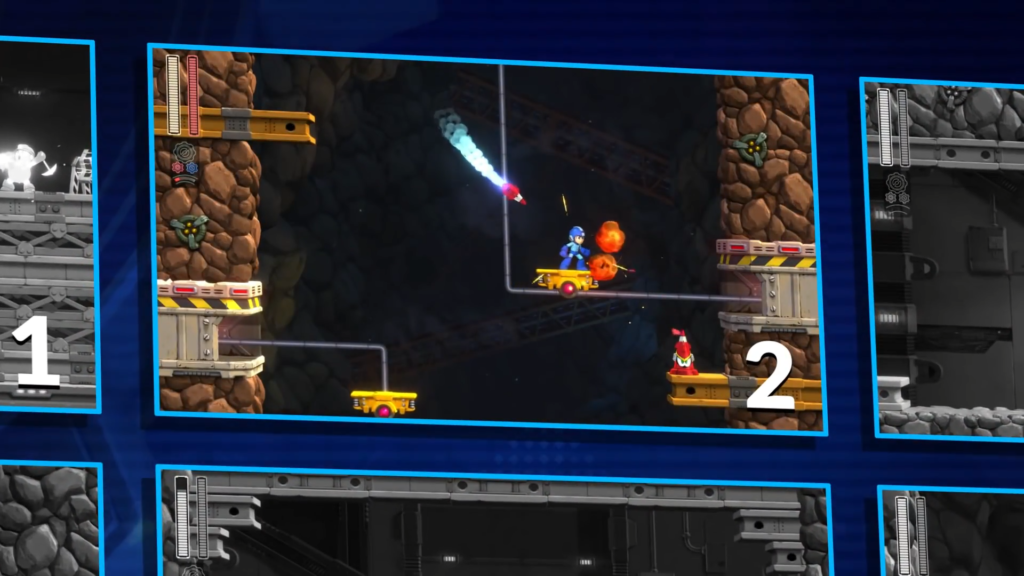
A large number of enemies are waiting for us in room 10.

In room 15 there is an aboveground maze with rockets and a mini-boss Pick Man.

In several rooms we meet drills that flash the entire screen. In room 5, they don’t pose much danger.
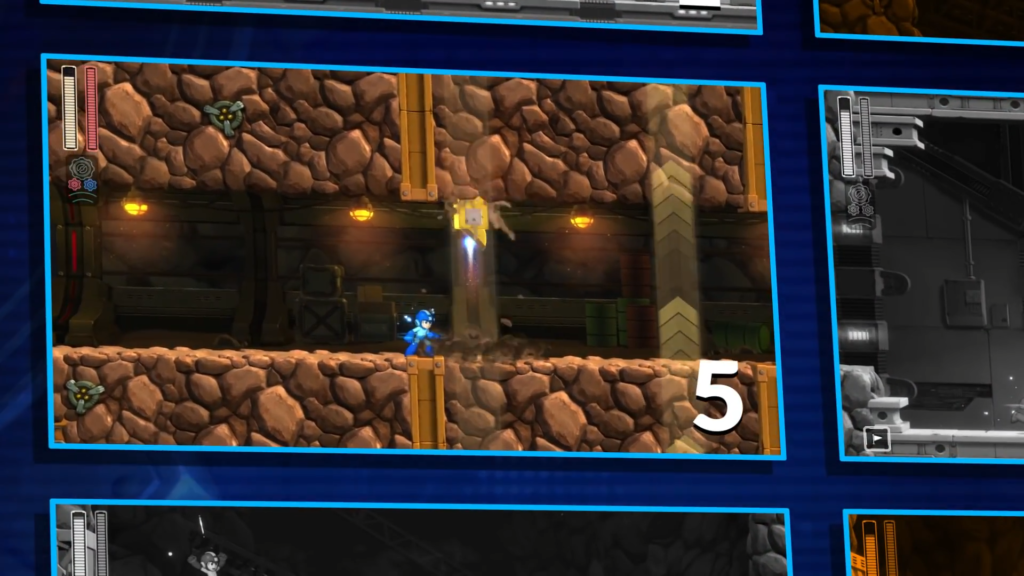
But in room 11 you will have to go down narrow corridors, and the boers will attack you from different angles.
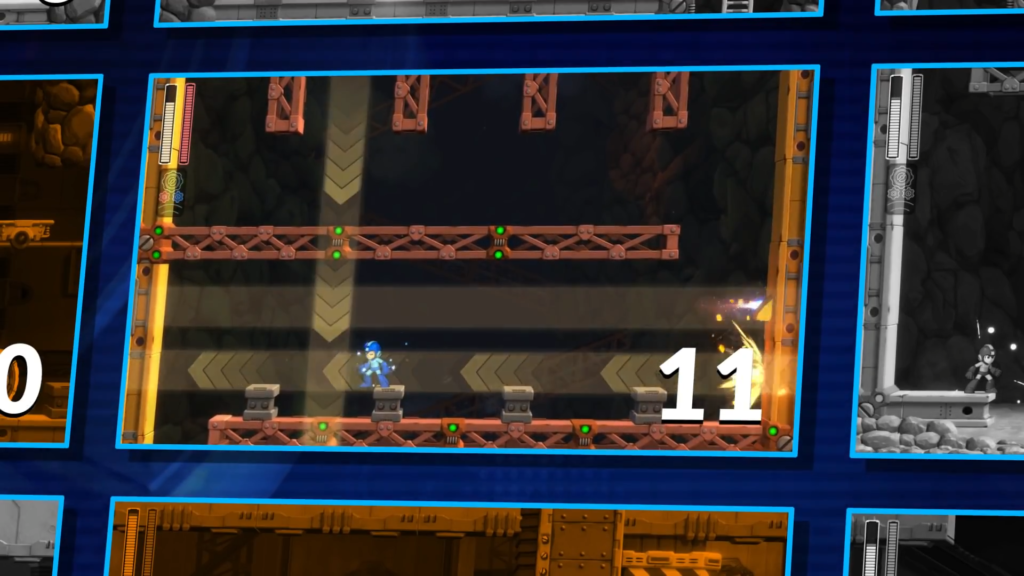
Soon this mechanic will appear in combination with some other. So, in room 18, you escape from the boers by jumping on moving platforms. It would be difficult to do this, but fortunately, you have already seen in the previous rooms how both platforms and drills work. So now, even when they are combined into one danger, you can deal with them.

These same boers only briefly appear in room 20 once. And they are also used in battle against us by the main boss of the level – Impact Man.

In Mega Man 11 there are special rooms designed to diversify the gameplay. At each level you will find a mini-boss that will delay your progress through the rooms. For example, it will be an animated mammoth skeleton.
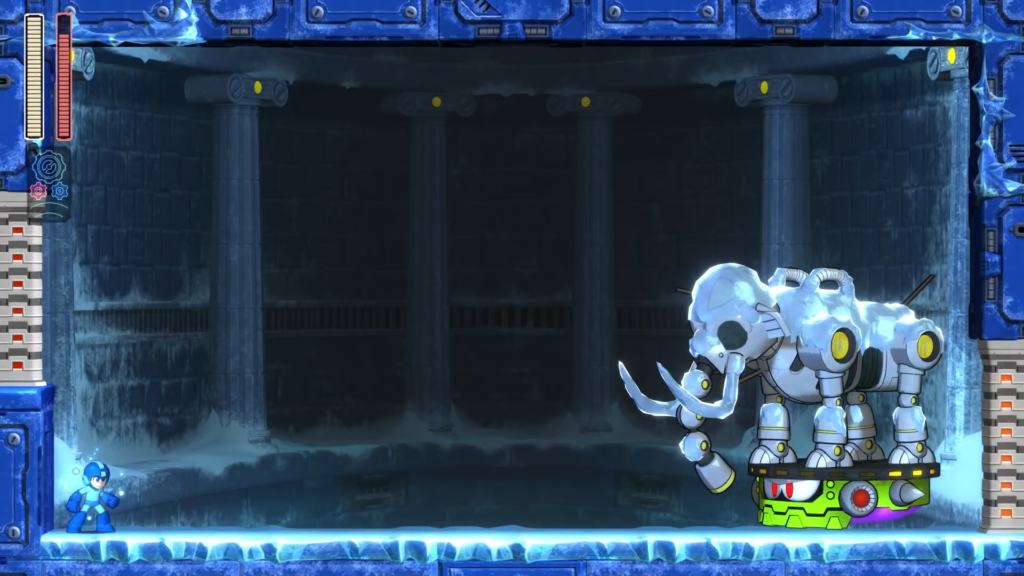
In all rooms of the level, its main theme can be traced. Take the level of Bounce Man and his mini-boss — a huge inflatable toad. First, the player defeats her in one room, then meets her in another, where he has to fight by jumping on balloons.
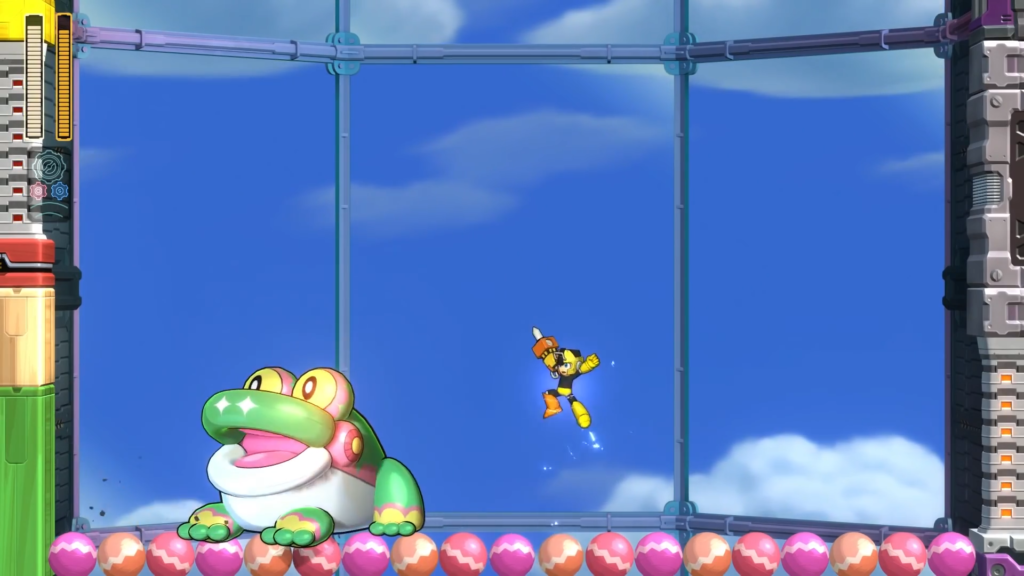
There is always a special empty room in front of each room with a mini-boss. There you can save yourself (if your chosen difficulty allows it) and take a little breath.
During the passage, you will stumble upon special rooms with secret tests. Here you can get useful items — extra life or energy, but it will not be easy to get to them. You will have to solve a small puzzle using the unique mechanics of this level (or just use a cheat Rush). If you don’t want to risk getting the item, go ahead.

All levels in the game follow the above rules. But there is no common tactic for passing all levels. In Mega Man 11, each of them is a maze, a tangle of very different elements. The game can be compared to a musical symphony, where repeating segments are successfully combined.
Of course, in such a long franchise as Mega Man, there were other games in which the level design was amazing. What are some gravity jumps at the level of Gravity Man in Mega Man V or unwinding garden hoses at the level of Hornet Man in Mega Man 9 worth! But these levels did not always combine well. Not as good as in Mega Man 11.
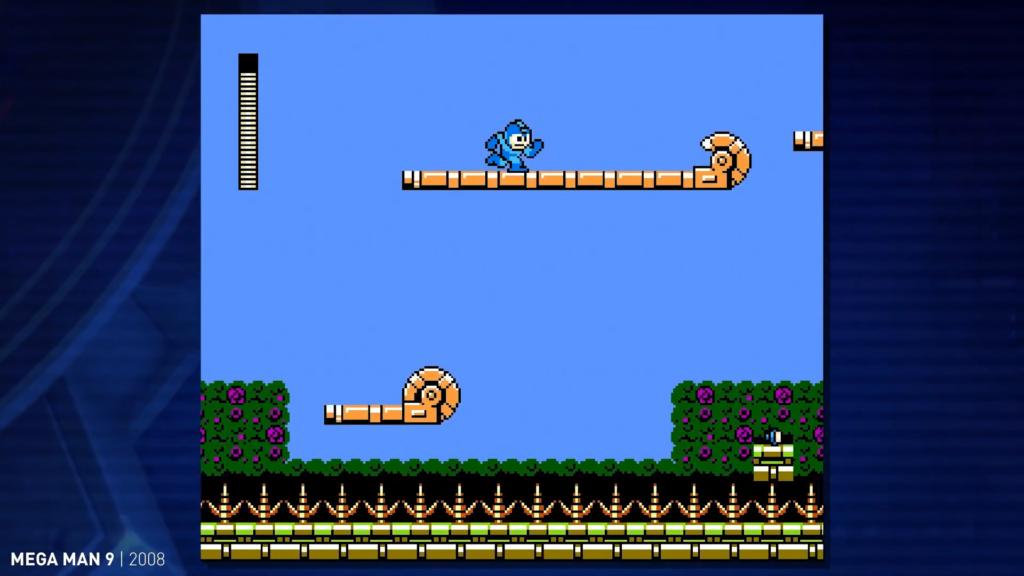
Sometimes Capcom’s attempts to diversify the gameplay led to the fact that some dangers for the entire game appeared only in one room — like rotating wheels at the Yamato Man level. Or like spinning tops over a bottomless abyss at the very end of the Top Man level. The player saw them for the first time, tried to memorize their movements, but still fell into the abyss. At the same time, at the Wood Man level, you could meet a fire-breathing robo-dog in three rooms in a row at once! It would be better if she didn’t appear so often.
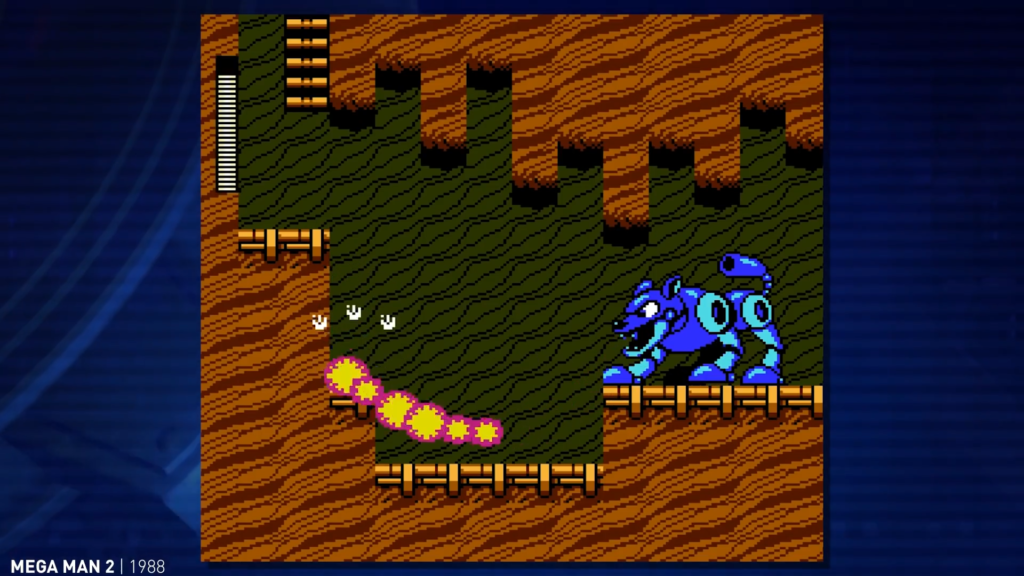
Maybe the levels in Mega Man 11 are not the most memorable. (Also, in a couple of particularly difficult places, I almost broke the controller.) But it’s nice to see that the combination of all elements in Capcom was approached very reasonably. All new mechanics in the game appear on time, all ideas are used to the fullest, but the most important thing is that not a single element in the game can be called superfluous or useless.

Also on the topic:
A source: Game Maker’s Toolkit

/cdn.vox-cdn.com/uploads/chorus_image/image/58083791/3321532_megaman11_art.0.png)